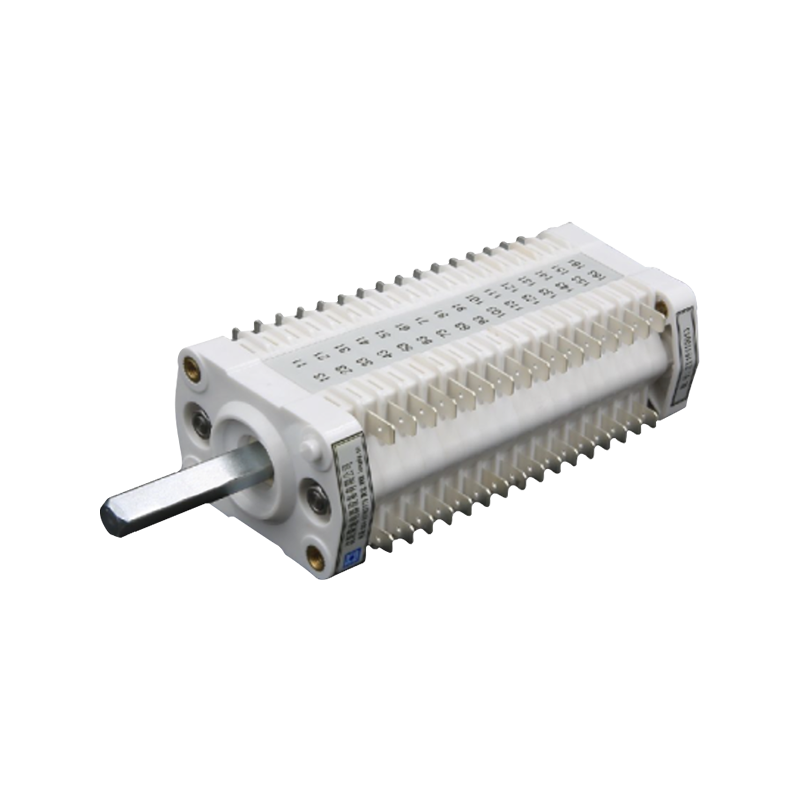

Auxiliary switch contacts in high voltage circuit breakers do not work
Release time:2024-06-11
In power systems, high voltage circuit breakers play a key role in protection and control. Auxiliary switches, as an integral part of them, are responsible for control and signal transmission to ensure precise and efficient operation. However, when these auxiliary switches do not make contact, the stability and safety of the entire system is jeopardized.
Auxiliary switches work on a simple but ingenious principle, similar to a sophisticated mechanical translator, translating the main contact action of a high-voltage circuit breaker into a control signal for remote monitoring and operation. From closing to opening, every action is transmitted to the control system through the auxiliary switch, ensuring that the operator can accurately grasp the status of the equipment.
A common problem with auxiliary switches is the failure of a contact, which is usually caused by mechanical wear, environmental factors or material deterioration. Once it occurs, it can lead to control failures or signaling errors, and in severe cases, it can even cause operational errors, bringing unpredictable risks to the power system.

To solve the problem of a non-functioning contact, it is first necessary to carry out regular inspection and maintenance of the auxiliary switch. This includes inspection of the physical condition of the contacts, testing of the electrical performance, and evaluation of the contact resistance and insulation status. If problems are found, damaged parts should be cleaned, adjusted or replaced.
In terms of design, consideration can be given to increasing the reliability of auxiliary switches, such as using more corrosion-resistant materials, improving the structural design of the contacts, or adding self-cleaning features. In addition, the use of intelligent monitoring technology, such as sensors and IoT devices, real-time monitoring of the working status of the auxiliary switch can greatly improve the efficiency of fault warning and handling.
With the development of technology, the future auxiliary switch will be more intelligent and modular. By integrating advanced sensing technologies and adaptive control systems, a higher level of self-protection and maintenance can be realized. For example, machine learning algorithms are used to analyze historical operating data, predict the degree of contact wear, and proactively prompt maintenance needs.

The stable operation of high-voltage circuit breakers is the basis for ensuring the safety of the power system, and the normal operation of auxiliary switches is an indispensable part of it. In the face of the problem of contact failure, we need to start from prevention, detection to maintenance in an all-round way, combined with advanced technology, to improve the performance and reliability of the auxiliary switch. Through such meticulous attention and improvement, we can ensure that every beat of the power grid is safe and accurate, guarding the continuous shining of the city's bright light.
Translated with DeepL.com (free version)
Auxiliary switches work on a simple but ingenious principle, similar to a sophisticated mechanical translator, translating the main contact action of a high-voltage circuit breaker into a control signal for remote monitoring and operation. From closing to opening, every action is transmitted to the control system through the auxiliary switch, ensuring that the operator can accurately grasp the status of the equipment.
A common problem with auxiliary switches is the failure of a contact, which is usually caused by mechanical wear, environmental factors or material deterioration. Once it occurs, it can lead to control failures or signaling errors, and in severe cases, it can even cause operational errors, bringing unpredictable risks to the power system.

To solve the problem of a non-functioning contact, it is first necessary to carry out regular inspection and maintenance of the auxiliary switch. This includes inspection of the physical condition of the contacts, testing of the electrical performance, and evaluation of the contact resistance and insulation status. If problems are found, damaged parts should be cleaned, adjusted or replaced.
In terms of design, consideration can be given to increasing the reliability of auxiliary switches, such as using more corrosion-resistant materials, improving the structural design of the contacts, or adding self-cleaning features. In addition, the use of intelligent monitoring technology, such as sensors and IoT devices, real-time monitoring of the working status of the auxiliary switch can greatly improve the efficiency of fault warning and handling.
With the development of technology, the future auxiliary switch will be more intelligent and modular. By integrating advanced sensing technologies and adaptive control systems, a higher level of self-protection and maintenance can be realized. For example, machine learning algorithms are used to analyze historical operating data, predict the degree of contact wear, and proactively prompt maintenance needs.

The stable operation of high-voltage circuit breakers is the basis for ensuring the safety of the power system, and the normal operation of auxiliary switches is an indispensable part of it. In the face of the problem of contact failure, we need to start from prevention, detection to maintenance in an all-round way, combined with advanced technology, to improve the performance and reliability of the auxiliary switch. Through such meticulous attention and improvement, we can ensure that every beat of the power grid is safe and accurate, guarding the continuous shining of the city's bright light.
Translated with DeepL.com (free version)
